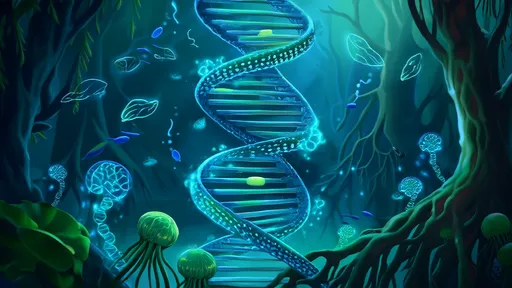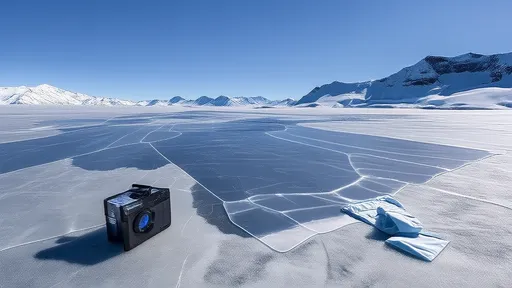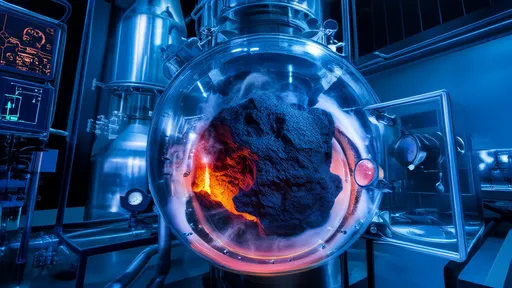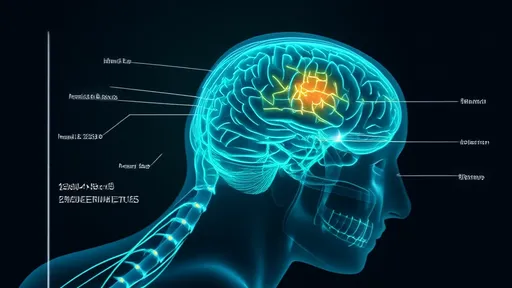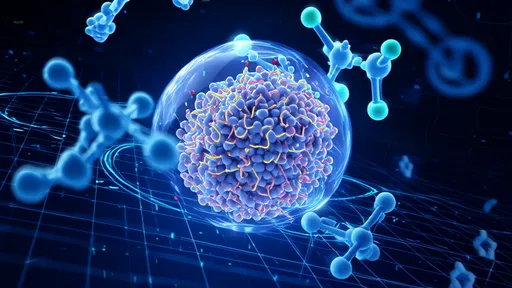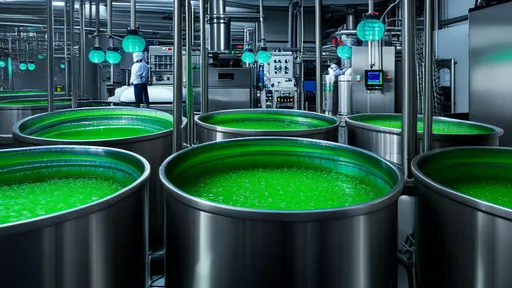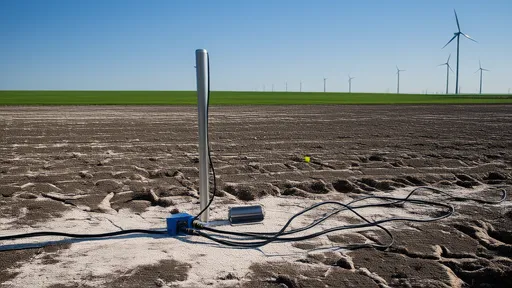In the race to mitigate climate change, scientists and engineers are turning to the Earth’s own geological processes for solutions. One of the most promising avenues is basalt carbon mineralization, a natural chemical reaction that locks away carbon dioxide in solid rock. This process, often described as nature’s own carbon capture and storage (CCS) system, is now being harnessed and accelerated to combat rising atmospheric CO₂ levels. Unlike traditional carbon storage methods, which rely on fragile seals and uncertain long-term stability, basalt mineralization offers a permanent and geologically secure solution.
The Science Behind Basalt Carbon Mineralization
Basalt, a common volcanic rock, is rich in calcium, magnesium, and iron—elements that react readily with CO₂ to form stable carbonate minerals. When CO₂ is injected into basalt formations deep underground, it dissolves in water to form carbonic acid. This weak acid then reacts with the basalt’s minerals, precipitating solid carbonates such as calcite, magnesite, and siderite. These minerals are thermodynamically stable over geological timescales, effectively removing CO₂ from the carbon cycle for millennia. The process mimics the natural weathering of rocks but is supercharged under controlled conditions.
Field experiments, such as the CarbFix project in Iceland, have demonstrated the feasibility of this approach. At the Hellisheiði geothermal power plant, CO₂ and hydrogen sulfide (H₂S) are captured from emissions, dissolved in water, and injected into basaltic bedrock. Within two years, over 95% of the injected CO₂ had mineralized—far faster than initially predicted. Similar projects in Washington State’s Columbia River Basalts and in Oman’s peridotite formations have yielded comparable results, proving that basalt carbon mineralization is not just a laboratory curiosity but a scalable technology.
Advantages Over Conventional Carbon Storage
Traditional CCS methods involve injecting pure CO₂ into depleted oil reservoirs or saline aquifers, where it remains as a free gas or dissolved in brine. These approaches carry risks of leakage and require continuous monitoring. In contrast, mineralized CO₂ becomes part of the rock matrix, eliminating the possibility of escape. Basalt formations are also widespread, found on every continent and beneath the ocean floor, offering vast storage potential. Moreover, because basalt is highly reactive, mineralization can occur within years to decades—a blink of an eye in geological terms.
Another critical advantage is the utilization of water in the process. By dissolving CO₂ in water before injection, the risk of inducing seismic activity—a concern with high-pressure gas injection—is minimized. The water also enhances the reactivity of the basalt, speeding up mineralization. This dual role of water as both a transport medium and a reaction accelerator makes basalt carbon mineralization uniquely efficient.
Challenges and Scaling Up
Despite its promise, basalt carbon mineralization faces hurdles. The process requires large volumes of water—a scarce resource in many regions. Researchers are exploring alternatives, such as using seawater or brines from desalination plants, but these options introduce technical complexities. Additionally, the energy needed to capture, transport, and inject CO₂ must be carefully managed to avoid offsetting the climate benefits. Renewable energy sources, such as geothermal or solar power, could mitigate this issue, particularly in regions like Iceland where clean energy is abundant.
Scaling up the technology also demands significant infrastructure. Pipelines must be built to transport CO₂ from industrial sources to suitable basalt formations, and injection wells must be drilled. Public acceptance and regulatory frameworks will play a crucial role, as communities may resist large-scale underground injections. Transparent communication about the safety and permanence of mineralization will be essential to gaining trust.
The Global Potential
The sheer volume of basalt on Earth suggests enormous capacity for CO₂ storage. Conservative estimates indicate that global basalt formations could sequester thousands of gigatons of CO₂—far more than humanity has emitted since the Industrial Revolution. Oceanic basalts, which cover nearly 70% of the planet’s surface, are particularly attractive because they are often overlain by thick sediments that prevent CO₂ from escaping. Projects like the Solid Carbon initiative aim to tap into these offshore reservoirs, using floating platforms to capture and inject CO₂ directly into the seabed.
Developing countries with significant basalt deposits, such as India and Ethiopia, could leverage this technology to offset emissions while fostering green industries. Partnerships between nations, akin to the Iceland-Switzerland collaboration in CarbFix, will be vital to sharing knowledge and resources. The United Nations’ Intergovernmental Panel on Climate Change (IPCC) has already highlighted mineral carbonation as a key tool for achieving negative emissions, and international funding is beginning to flow into research and pilot projects.
Looking Ahead
Basalt carbon mineralization stands at the intersection of geology, chemistry, and engineering—a testament to humanity’s ability to learn from and work with natural systems. While challenges remain, the urgency of the climate crisis demands bold solutions. By transforming CO₂ from a dangerous pollutant into harmless rock, this technology offers a path to not just slowing global warming but reversing it. The rocks beneath our feet, once seen as inert and unchanging, may well hold the key to a sustainable future.
The rhythmic lapping of brackish water against tangled mangrove roots conceals one of nature's most extraordinary genetic survival stories. For centuries, these salt-tolerant trees have guarded molecular secrets in their DNA that allow them to thrive where other plants perish. Today, scientists are cracking open this genetic vault through an ambitious international initiative called the Mangrove Gene Bank Project, with groundbreaking implications for global food security.
In the face of accelerating glacial melt due to climate change, scientists and engineers are turning to innovative solutions to slow the disappearance of these critical ice reserves. One such breakthrough is the development of high-albedo fabric covers, colloquially termed "glacial nanoblankets," designed to reflect sunlight and reduce ice ablation. These advanced textiles are emerging as a promising tool in the fight against rising sea levels and ecosystem disruption.
In the race to mitigate climate change, scientists and engineers are turning to the Earth’s own geological processes for solutions. One of the most promising avenues is basalt carbon mineralization, a natural chemical reaction that locks away carbon dioxide in solid rock. This process, often described as nature’s own carbon capture and storage (CCS) system, is now being harnessed and accelerated to combat rising atmospheric CO₂ levels. Unlike traditional carbon storage methods, which rely on fragile seals and uncertain long-term stability, basalt mineralization offers a permanent and geologically secure solution.
The concept of marine cloud brightening through aerosol seeding has emerged as a potential geoengineering strategy to combat global warming. By enhancing the reflectivity of clouds over oceans, scientists aim to increase Earth's albedo, thereby cooling the planet. This approach, while still in experimental stages, has garnered significant attention due to its promise of offsetting some effects of climate change without requiring drastic reductions in greenhouse gas emissions.
For decades, the study of chronic pain has been hampered by the inability to observe neural activity over extended periods. Traditional imaging techniques provide snapshots of brain activity but fail to capture the dynamic, evolving nature of pain processing. A groundbreaking approach using transparent skull implants is now revolutionizing our understanding of how chronic pain manifests and persists in the brain.
In the perpetual darkness of the deep sea, hydrothermal vents spew superheated, mineral-rich fluids into the frigid water, creating oases of extreme chemistry that have fascinated scientists for decades. These underwater geysers, often located along mid-ocean ridges, host complex reactions that may hold clues to the origins of life and the formation of mineral deposits. Until recently, studying these dynamic systems in their natural state posed immense challenges—until the advent of deep-sea chemical robots capable of in situ monitoring.
In a groundbreaking development that merges cutting-edge physics with ancient archaeology, researchers have successfully utilized neutron holography to reveal hidden inscriptions beneath the patina of bronze artifacts. This non-invasive technique promises to revolutionize the study of corroded metal objects, offering unprecedented access to historical texts without damaging delicate surfaces.
The advent of cryo-electron microscopy (cryo-EM) coupled with artificial intelligence (AI) has revolutionized the field of structural biology. By capturing the intricate dance of proteins in their native states, scientists are now able to unravel the dynamic architectures that govern cellular functions. This powerful synergy between cutting-edge imaging and machine learning is not just a technological leap—it’s a paradigm shift in understanding life at the molecular level.
The world of ultrafast spectroscopy has entered a revolutionary phase with the advent of attosecond spectral knives—a cutting-edge tool that enables scientists to selectively excite specific vibrational states in molecules. This breakthrough technology is reshaping our understanding of molecular dynamics and opening new frontiers in chemical reaction control. Unlike conventional methods that often excite molecules indiscriminately, attosecond spectral knives offer unprecedented precision by targeting individual quantum states with laser pulses lasting mere billionths of a billionth of a second.
The global food system is undergoing a quiet revolution, one fermentation tank at a time. In laboratories and production facilities around the world, scientists and entrepreneurs are harnessing the power of microalgae to create what many believe could become the protein source of the future. These microscopic photosynthetic organisms, grown in controlled fermentation environments, are demonstrating remarkable potential to address some of our most pressing nutritional and environmental challenges.
The agricultural sector is undergoing a quiet revolution as artificial intelligence merges with robotics to address one of nature's most vital processes: pollination. In fields across the world, experimental deployments of mechanical pollinator swarms are demonstrating how AI-driven vision systems can collaborate to mimic—and potentially enhance—the work of vanishing bee populations. These autonomous systems represent not just a technological breakthrough, but a necessary adaptation to ecological instability.
For decades, farmers and land reclamation specialists have struggled with the persistent challenge of saline-alkali soils - those unproductive lands where high salt concentrations and alkaline pH levels stunt plant growth and render vast areas agriculturally useless. Traditional remediation methods often proved either too slow, too expensive, or too water-intensive to implement at scale. Now, an innovative electrochemical approach using pulsed electric fields is demonstrating remarkable potential to transform these barren landscapes into fertile ground.
In the rolling hills of Colombia's coffee belt, a quiet revolution is taking place beneath the emerald canopies of coffee plants. Researchers are conducting groundbreaking field trials with genetically edited coffee plants designed to grow beans naturally low in caffeine. This ambitious project could forever change how the world consumes its most popular psychoactive beverage.
For centuries, the intricate world beneath our feet remained largely a mystery. Farmers, ecologists, and biologists could only speculate about the complex interactions between plant roots and soil structure. Traditional methods of studying root systems involved destructive sampling—digging up plants and washing away soil to examine roots. This approach not only killed the plants but also disrupted the very soil architecture researchers sought to understand. However, a quiet revolution in agricultural science is changing everything.
The concept of piezoelectric railways is revolutionizing the way we think about sustainable energy in transportation. By converting the mechanical energy from train-induced vibrations into electrical power, these systems offer a promising solution for reducing dependency on external power sources. The technology leverages piezoelectric materials, which generate electricity when subjected to mechanical stress, embedding them directly into railway tracks. This innovation not only enhances energy efficiency but also aligns with global efforts to combat climate change by minimizing carbon footprints.
